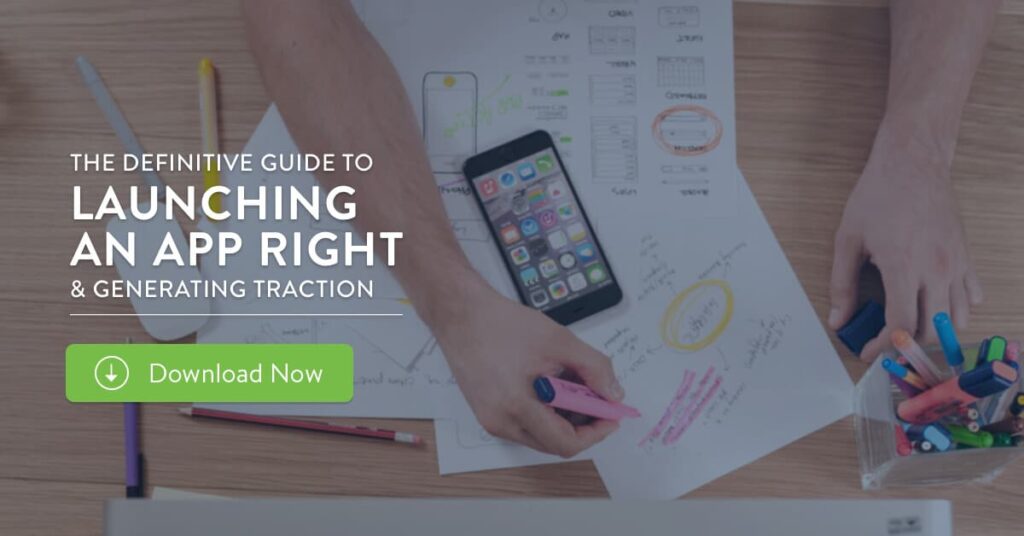What’s the number one thing that keeps startups from succeeding?
According to a research report from CB Insights based on the post-mortems of 204 failed startups, the number one reason for failure is no market need: Forty-two percent of the startups studied were trying to solve problems that may have been interesting, but didn’t address an actual need.
The second most common failure trait was running out of cash (29 percent) followed by not having the right team to execute (23 percent). The team dynamic is what we want to talk about today—specifically, the impact that outsourcing app design can have on a startup.
We’ve all seen the success that startups like Medium have had with third-party design teams, or the many design and app agencies that have been acquired (or acquihired) by organizations like Facebook, Twitter, Uber and Shopify. While outsourcing design for a mobile app can be a smart decision, it’s not without risk.
In this post, we’ll be talking about some of the real risks that come with outsourcing app design so that you know what to expect before you take the plunge.
Risk 1: Inexperience Can Lead To Delays
The design industry is growing, and there are plenty of designers on the hunt for work. If you’re in tech, it’s likely that you already know a designer or two who is working freelance. Over the years, I’ve met and worked with some amazing freelance designers. Unfortunately, I’ve come across some very inexperienced designers as well.
The challenge for startups is recognizing an inexperienced designer. Even an inexperienced designer can talk the talk until it’s time to deliver. I’ve seen startups make the mistake of hiring a designer who constantly misses deadlines and doesn’t deliver materials for important meetings. This is a risk you face when outsourcing your design to someone with little experience.
But the same issue can happen with an agency too. I’ve seen many agencies take on mobile app design projects thinking that it’s the same as web or print design. Unfortunately, this never ends well and the technical team is required either to hack the designs into a passable app experience or fire the agency and bring in the professionals to find a remedy—either way, it costs money and time.
Risk 2: Scope Creep Can Kill Your Product
Remember the second most common trait for startups that fail? They run out of money.
We’ve seen plenty of startups (both bootstrapped and VC-funded) make the mistake of working with a team that didn’t accurately estimate the time—and therefore, the cost—required to build their app. In many cases, this situation occurs when the designer or design agency doesn’t spend enough time up-front understanding the project in full, including the technical requirements, which can range from APIs to internal data systems.
As you look for your design partner you should look for someone who has process in place to reduce the chances of scope creep. One of the best indicators of a professional or app agency that is organized is their ability to scope a project before diving in and creating visuals or writing code. As an example, we always take the time to work with our clients through the Mobile Blueprint Process. It allows us to better understand the organization’s goals and the technical requirements for bringing the app to life. Once we have finalized wireframes and a product roadmap, we’re able to accurately estimate the cost of building the app. Scope creep avoided.
Risk 3: No Integration Between Internal Team & Design Team
Managing teams in different locations is a reality of outsourcing design. But if your chosen design team doesn’t have experience working with organizations from a distance, it can be a challenge to get everyone on the same page. Ensuring that the expectations of both your internal team and your outsourced design team are aligned is key.
The best partners recognize and embrace the idea of having open communication between your team and their team. You will want a partner who looks to create opportunities for collaboration that go beyond emails. As an example, our Blueprint Process allows us to ensure that our team and our clients are on the same page. We hold a discovery workshop that allows us to better understand the entire picture up front before diving into research and analytics. The entire approach is collaborative.
Risk 4: Ongoing Maintenance & Update Fees
Too many startups make the mistake of thinking that once an app is launched, the designing part is done for good. In reality, regularly improving the design of your mobile app is a necessity: The day after you launch your app, you’ll start receiving data on user behaviors that reveal opportunities to enhance your app.
The best startups ensure that ongoing efforts to improve their apps include more than the technical aspects. You don’t want to sit back and accept your app’s design & UX forever. Instead, make sure that you’re consistently making the user experience better through updates to the design.
When you outsource your design to a third party, this effort obviously means a bigger budget. As a result, many startups do not invest in ongoing design improvements, giving their competition an opening.
Wrapping Things Up
While bringing in third-party designers carries risk, their expertise can also give your startup an edge over the competition. A great app agency can help your team establish the processes required to ship quickly, the aesthetic to make your app stand out in the market, and the strategic insight you’ll need to stay ahead.
If you’re unsure of whether your startup should outsource to an app agency, be sure to check out our free guide, where we break down the pros and cons of app outsourcing with a transparent, authentic lens. Further, if you’d like to chat with someone on our team about what you’re building, get in touch! We’d love to chat.




